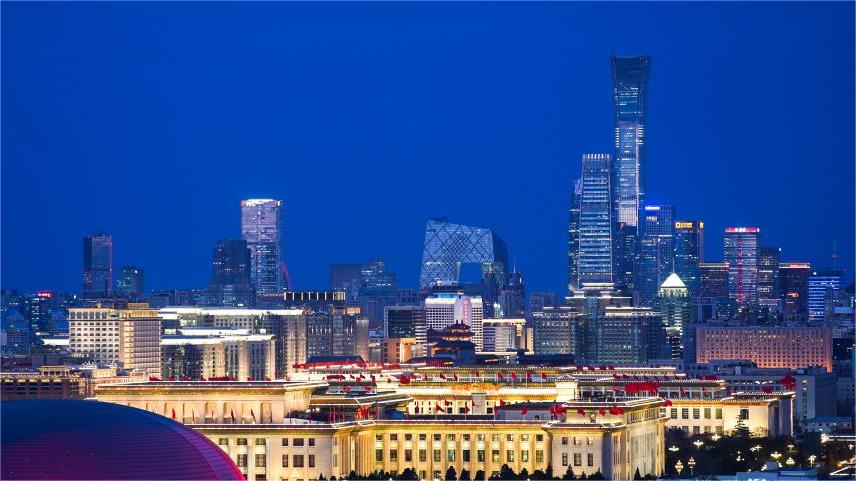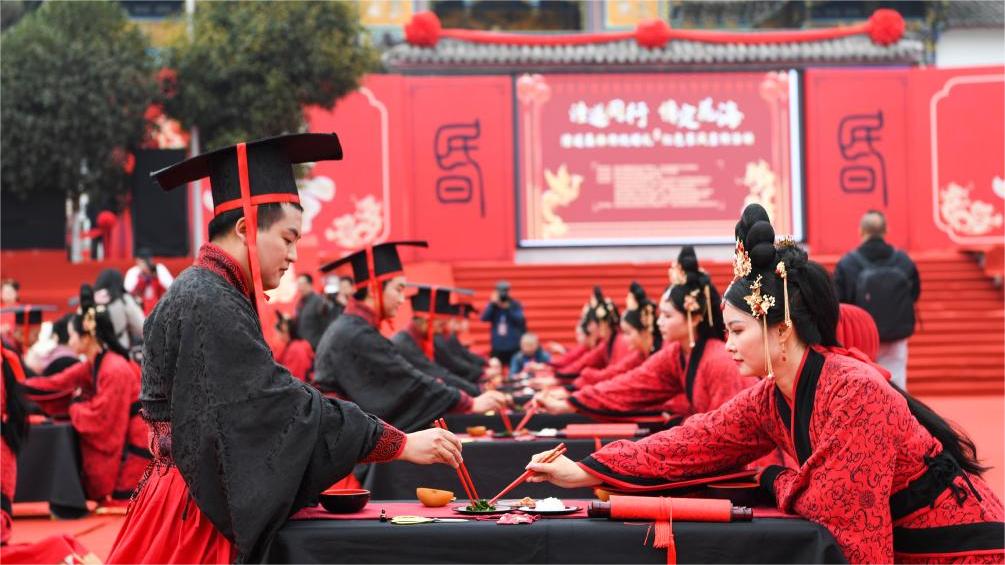How does Xi address the "Achilles' heel" of China?
BEIJING, March 12 (Xinhua) -- Chinese leader Xi Jinping has sounded the clarion call for reform during the country's annual key political season, dispelling concerns about whether China's reform is "stagnating," or its economy is "losing steam."
"We must plan major moves to deepen reform to inject strong impetus into promoting high-quality development and advancing Chinese modernization," President Xi said at the annual sessions of China's top legislature and top political advisory body, or the "two sessions," which wrapped up on Monday.
China is currently at a critical juncture, where Xi is leading the country to realize the ambitious "Chinese modernization," while being confronted with major challenges, such as downward economic pressure following the COVID-19 pandemic, rising protectionism and suppression from Western nations, and risks associated with the real estate sector, local government debts, and some small and medium-sized financial institutions.
This reminds people of the year when Xi assumed the post of the general secretary of the Communist Party of China Central Committee. In 2012, China's annual economic growth rate dropped below 8 percent for the first time since 1999.
Xi pointed out that China's economy had entered a new development stage and proposed a new development philosophy featuring innovative, coordinated, green, open and shared growth. He initiated the supply-side structural reform, pushing the economy toward high-quality development and moving to construct a new development pattern.
After years of supply-side structural reform under Xi's watch, the quality and competitiveness of Chinese products have improved, many of which have earned international acclaim, spanning from lithium-ion batteries and photovoltaic products to drones.
The reform also tackled the challenge of overcapacity in certain sectors.
To push forward the supply-side structural reform, Xi is leading by example with foresight. A decade ago, most cars on China's roads were foreign-brand gasoline vehicles. In 2014, during an inspection of SAIC Motor, a major Chinese carmaker, he emphasized the significance of developing products that cater to diverse needs and highlighted the importance of new energy vehicles (NEVs) in strengthening China's position in the automotive sector.
In the following decade, Xi became a big fan of electric cars, visiting automotive companies, touring laboratories, and showing great interest in experiencing electric cars.
By the time he visited an NEV company in 2023, the country had already become a global leader in NEV technology. Every three vehicles exported by China included one electric passenger car, and China's NEV production and sales constituted two-thirds of the world's total.
The new energy industry is, in fact, part of Xi's vision of new quality productive forces. The phrase "new quality productive forces" has become a fresh buzzword after Xi talked about it during his recent inspection trips, but he started to promote it much earlier.
Back in the 1970s in the village of Liangjiahe where he was sent to do farm labor, Xi took the lead in introducing biogas-generating facilities to Shaanxi Province, allowing villagers to use biogas for lighting and cooking, replacing the traditional way of burning wood. This early initiative can be considered an example of leveraging new quality productive forces during that time.
In 2024, developing new quality productive forces was written into the government work report for the first time. This is widely believed as the recognition that the economic growth model primarily driven by low-cost labor, extensive yet inefficient investment, external demand and excessive resource consumption can no longer be sustained, and China must actively cultivate new technologies, new business models and future industries to enhance the quality and efficiency of development.
Xi believes that to develop new quality productive forces, it is imperative to further deepen reforms to boost sci-tech innovation.
He likened China's lack of strong innovation capability to the "Achilles' heel" of an economic giant. New quality productive forces align with Xi's earlier vision of an innovation-driven development strategy.
"Only reformers can advance, only innovators can thrive, and only those who reform and innovate will prevail," Xi stressed.
Under his guidance, a slew of pro-innovation measures were rolled out to encourage enterprises to intensify research and development, apply sci-tech research achievements in the real world, and refine the management of major sci-tech projects. He also pushed for the establishment of a new system for mobilizing resources nationwide to make key technological breakthroughs.
The effects are evident, with China's ranking in the Global Innovation Index, published by the World Intellectual Property Organization, jumping from 34th in 2012 to 12th last year.
Data issued in 2023 showed that China in 2022 overtook the United States for the first time as the No. 1 ranked country or territory for contributions to research articles published in the Nature Index group of high-quality natural science journals.
Telecom giant Huawei successfully launched its new high-end smartphones last year, which demonstrated the limited effects of U.S. "extreme pressure" on Chinese high-tech firms.
Nevertheless, there is yet much work to be done. Xi has cautioned that "basic research is the source of sci-tech innovation. Although China has made significant progress in basic research, the distance with the international advanced level remains evident."
He has called for further support for basic research and original innovation, with a focus on ground-breaking and cutting-edge technologies.
(This article is an excerpt of the Xinhua story titled "Profile: Xi Jinping the reformer," which was released Tuesday.)
Photos
Related Stories
- Pakistan, China vow to cement ironclad ties
- Profile: Xi Jinping the reformer
- English edition of Xi's selected works published
- Xi's "two sessions" messages highlight China's high-quality development in crucial year
- Xi's "Two Sessions" Calendar: Xi attends closing meeting of top political advisory body's annual session
Copyright © 2024 People's Daily Online. All Rights Reserved.









